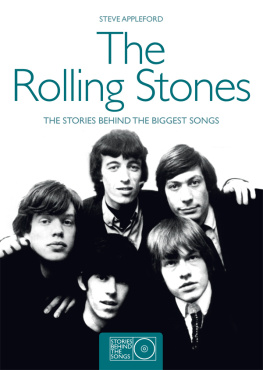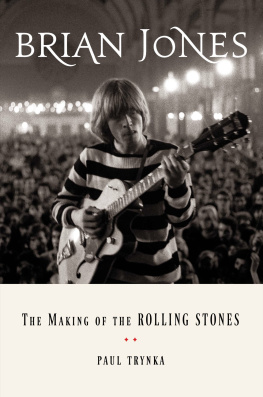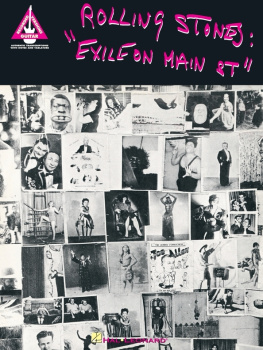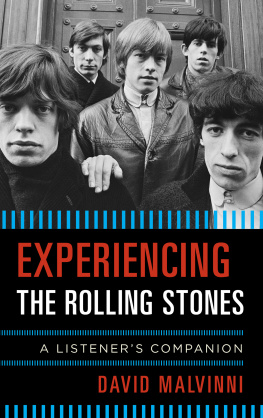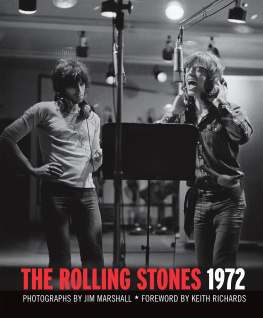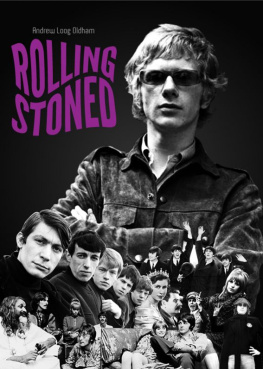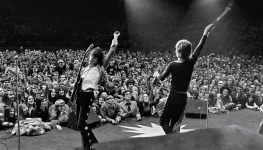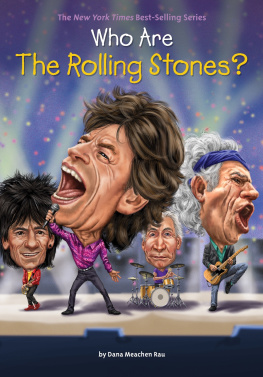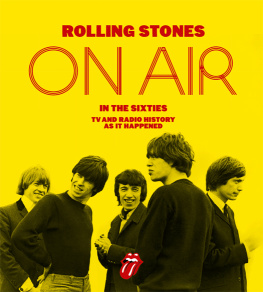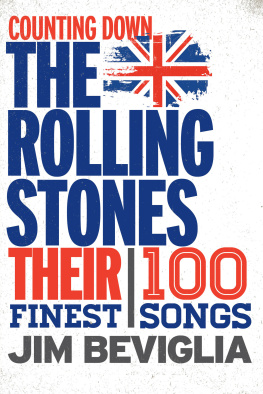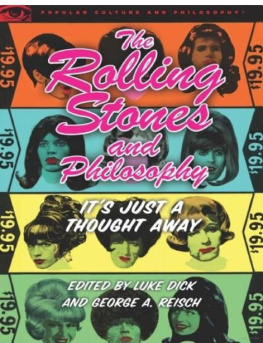
THIS IS A CARLTON BOOK
First published in Great Britain by
Carlton Books Limited 2010
20 Mortimer Street
London W1T 3JW
Text copyright 1997 Steve Appleford
Design copyright 2010 Carlton Books Limited
This book is sold subject to the condition that it shall not, by way of trade or otherwise, be lent, resold, hired out or otherwise circulated without the publishers prior written consent in any form of binding or cover other than that in which it is published and without a similar condition including this condition, being imposed upon the subsequent purchaser. All rights reserved
eISBN 978-1-78011-191-9
CONTENTS
INTRODUCTION
The Thames aint the Mississippi. And yet the blues descended on post-war London town like a prophetic message from another world a place of moonshine, sharecroppers and bad, bad love. It was a sound fuelled by tragedy and inner strength. And it was played by men like Muddy Waters, who arrived at his first ever field recording session in July 1942 in bare feet and with a borrowed guitar, singing with profound sexual tension of getting no satisfaction at all. I woke up this mornin, found my little baby gone.
The blues told the story of Black America, where the great singer Bessie Smith, the celebrated Empress of the Blues, bled to death when she was denied entry into a white hospital after a car accident. It was a world where Waters (born McKinley Morganfield) was a field worker by the age of 10, making less than 75 cents a day; and where even a blues titan like the dignified Son House, the man who taught Robert Johnson himself, was caught under the indifferent thumb of a white boss and landowner.
In the early 1960s, their music of intense joy and pain made an unlikely connection with British youth, with the likes of Brian Jones and Mick Jagger and Keith Richards, who knew little of the trouble Waters had seen, but who understood that the folk blues of Mississippi was about something real and passionate.
Baby Mick had first heard those sounds as a 12-year-old, spinning race records mailed direct from America. Then in 1960, Jagger was travelling to his classes at the London School of Economics, carrying a precious stack of new vinyl by Chuck Berry, Little Walter, Muddy Waters and Mississippi Fred McDowell, when he was spotted on the train by Keith Richards. Both of these solidly middle-class urchins were born in Dartford in 1943, and had known each other as children at Wentworth County Primary School before losing touch after the age of 11. Now young Mr Richards was hungrily eyeing the records under Micks arm: Youre into Chuck Berry, man, REALLY?
Records were still a scarce luxury in those days, so Keith invited Mick up to tea. Together they studied every groove, every ragged moment of love, hate, desperation and euphoria. For Richards, the discovery of these threeminute dispatches transformed his black and white life in suburban London into glorious Technicolor. By this time, Keith had become an art school misfit, now more obsessed with learning guitar than any of his class work. Mick was already singing Buddy Holly tunes for his own amusement at weekends, and soon began jamming rock and blues tunes with Richards at a friends house.
Mick and Keith dreamt of the monumental sounds they might make together, and often travelled to hear live music at local clubs. In 1962, they arrived at the Marquee Club in London in time to see Alexis Korners Blues Incorporated, where they discovered a young blond guitarist sitting in, hunched like a madman over his instrument, playing slide guitar on Dust My Broom not unlike the great Elmore James. Except that this cat who called himself Elmo Lewis wasnt from the Mississippi Delta country, but had come all the way from genteel Cheltenham for his few moments of blues glory. His real name was Brian Jones, and he told Jagger and Richards of his plans to form his own blues unit, once he escaped to London.
Jones was fanatical in his quest to create the Rollin Stones, a name taken from a Muddy Waters lyric. And he had soon recruited Jagger, Richards, bassist Bill Wyman (nee Perks), drummer Charlie Watts (another Blues Incorporated veteran) and pianist Ian Stewart. This was Brian Jones band. Mick was just the singer then, Keith just another guitarist. But they all shared a deep love for the rock and blues of Mississippi and Chicago, from the likes of Jimmy Reed, T-Bone Walker, Big Bill Broonzy, Bo Diddley, John Lee Hooker and dozens of other American artists largely overlooked in their own country.
The Rollin Stones quickly found themselves at the forefront of a new movement of young British blues players, committed to spreading the gospel according to Chess Records, home to many of the most distinctive bluesmen and rockers. It was an almost religious experience for the pious Stones, copying the old blues standards as if they were scripture, never pausing to seriously consider writing their own material as the Beatles had done from the very beginning. Anything else would have been SACRILEGE, or at least require an effort thus far beyond the bands reach. What could these London choirboys have to offer that hadnt already been said to greater effect by the original blues masters?
Jaggers voice was not yet the distinctive, seething growl that would emerge in the coming years, and was sometimes lost amidst the earnestness of the bands delivery. Likewise, Jones and Richards were hardly instrumental virtuosos, not in the manner that would have overheated graffiti artists declaring Eric Clapton as God. The duo instead locked together into a tight rhythmic juggernaut, working toward a rare mastery of rhythm guitar, the core element that would lead to the mature Stones sound later heard within Brown Sugar and Exile On Main Street.
Soon, the Stones were joined on the stages of London by a crowd of new blues-based artists in search of their own musical voices. The Animals arrived from Newcastle. Spencer Davis and Stevie Winwood came from Birmingham. Any new band hoping to succeed had to come to London. It was a fresh thing for most people because for ten years people had been listening to nothing but New Orleans jazz, then called Trad Jazz, says John Mayall, who arrived from Manchester in 1963, leaving his job in the graphics department of a hometown advertizing agency. That had been the reigning music in all the clubs. That same lineup of trumpet, trombone, clarinet and the rhythm section was all people really heard until this fresh Chicago sound came in. It appealed to the young generation. Theyd had an audience in the coffee shops and the folk clubs at that time in London. They just took it a step further. They were heavily influenced by Muddy Waters work with Little Walter and the amplifiers and so forth they just got electrified. And in those same folk clubs they started to get an audience.
At the centre of that movement was Alexis Korner, whose Blues Incorporated launched the careers of many young blues players. He also arranged for the Stones to share bills with visiting American bluesmen. If Korner was not one of the scenes exceptional guitarists, his great enthusiasm for fellow players inspired many. Mayall remembers Korners constant encouragement, and how the Hungarian-born guitarist personally introduced Mayall to London club-owners and musicians, essentially kickstarting Mayalls career as bandleader to the Bluesbreakers.
It was Alexis movement, recalls Mick Farren, a musician and writer who would later make his mark with the Deviants. He was a great proselytizer. He was a really lovely guy. If he had it, hed lend you money, and listen to your problems. He was everybodys godfather, rabbi, whatever. Alexis was an exceptional guy.
Next page
